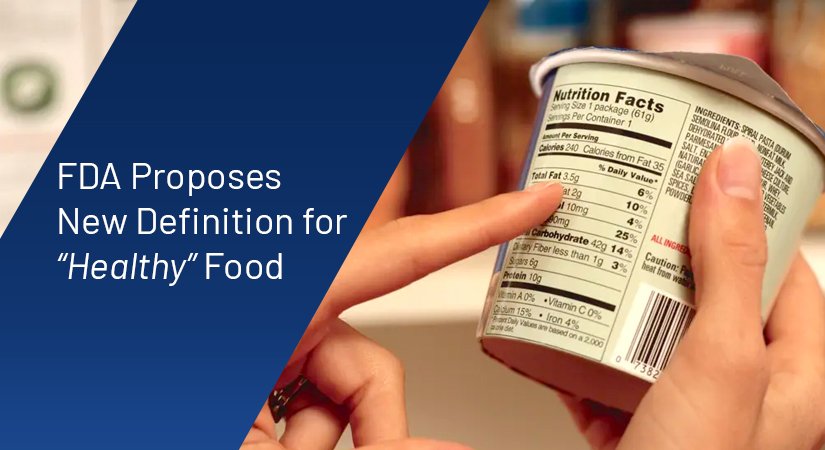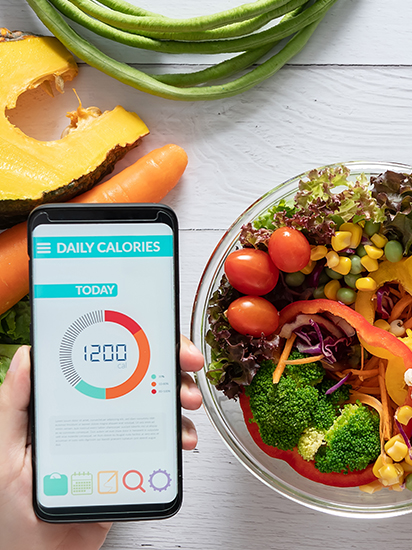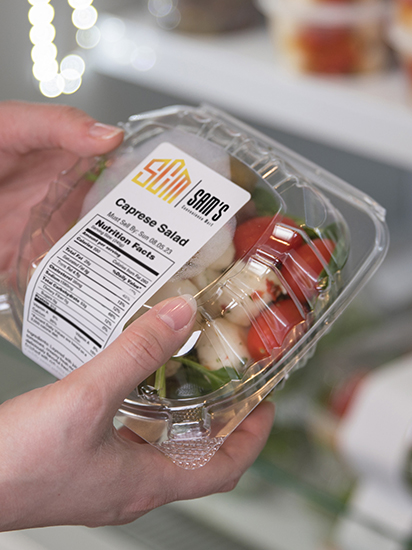The Impact of the New "Healthy" FDA Food Labeling Requirements

You might think you know the meaning of the word “healthy.” For the U.S. Food and Drug Administration (FDA), however, things are a little less clear. As a result, the FDA is currently in the process of redefining the “healthy” claim found on food packaging and labels. This redefinition looks to update FDA food labeling requirements and align the meaning of the term to meet current Nutrition Science standards, the existing Nutrition Facts Label, and the updated Dietary Guidelines for Americans.
Here is why it matters: These proposed rules could have a notable implication for the food service industry and current standard operating procedures across the board – from food producers all the way to the customer. The following article will discuss the FDA’s goals and objectives for “healthy” food labels, and how to meet compliance requirements regarding new food labeling standards.

Understanding the FDA's “Healthy” Goal
In redefining the meaning of "healthy," the FDA seeks to align current dietary recommendations in processed and packaged foods to be on par with scientific research in nutrition and food science. As it stands, the current definition of “healthy” in the food service sector is limited solely to nutritional content. Some foods that contain high levels of fats, like avocados and salmon, are thus considered healthy. According to the proposed guidelines, this would no longer be the case: The new guidelines the FDA suggest considering other factors in nutritional value, including fat content.
The goal, ultimately, is to encourage healthier eating practices and offer improved food options. The hope is that this will lead to an improvement in overall public health in the United States and address the continued rise in chronic diseases like obesity, diabetes, hypertension, heart disease and other cardiovascular ailments.
FDA Food Labeling Requirements
While still only a proposal, the new FDA food labeling requirements are certain to cause a stir in the food service industry. If the proposed recommendations for the definition of "healthy" pass and become finalized, major players in food service will need to adjust their product labels accordingly. Food manufacturers, for example, will be mandated to reevaluate products' nutritional content to ensure all nutritional
packaging follows the new guidelines.

Restaurant owners will need to confer with suppliers to confirm sourced products and ingredients align with this new definition as well and reevaluate recipes and menu items meet these proposed recommendations.
For instance, let’s say your restaurant menu has the option for a "healthy salad," which is made using grilled chicken, avocado, and a vinaigrette dressing; you might need to re-evaluate the said ingredients to ensure that the stated salad meets the new definition and guidelines. Under the proposed rules, it will be essential for restaurants to concisely and accurately indicate the nutritional value of their menu items to consumers as well as highlight other alternatives that meet these new guidelines. Restaurants can follow new consumer demands by printing new labels and making adjustments to menus and other print materials. This might include:
- Redesigning menus
- Updating websites
- Reprinting marketing materials
- Designing new labels for to-go & grab-and-go fresh food items
Beyond Food Labels: Education and Transparency
Not all changes will need to take place on the back end, however. Restaurants will also need to consider their role in educating customers about the new definition of “healthy,” and how it affects their menu options and choices. Providing clear information and maintaining transparency on the nutritional content of their menus gives consumers the option to make better and more informed decisions about the things they choose to eat.
Offering additional resources - nutrition guides or online calculators, for example – will also help customers understand the nutritional content of their menu items. By making this information readily available and easy to understand, restaurants will contribute to the FDA's overall goal of improving public health.
There is no doubt the new FDA food labeling requirements will cause a stir in the food service industry. All players in the sector, from food manufacturers to restaurants, will have to adjust their marketing materials, labels, and menus to embrace this change and comply with the new definition.
Building trust and boosting customer satisfaction is the key to success for any restauranteur. If the new rules pass, taking the necessary steps to demonstrate your brand’s commitment to public health, providing clear information and maintaining high standards for packaging and labels, will certainly lead to a healthy future.
Contact us at 800-642-3687 or email sales@dotit.com for a quote or to learn more about custom labels and print solutions for your restaurant or convenience store to comply with FDA food labeling requirements.
